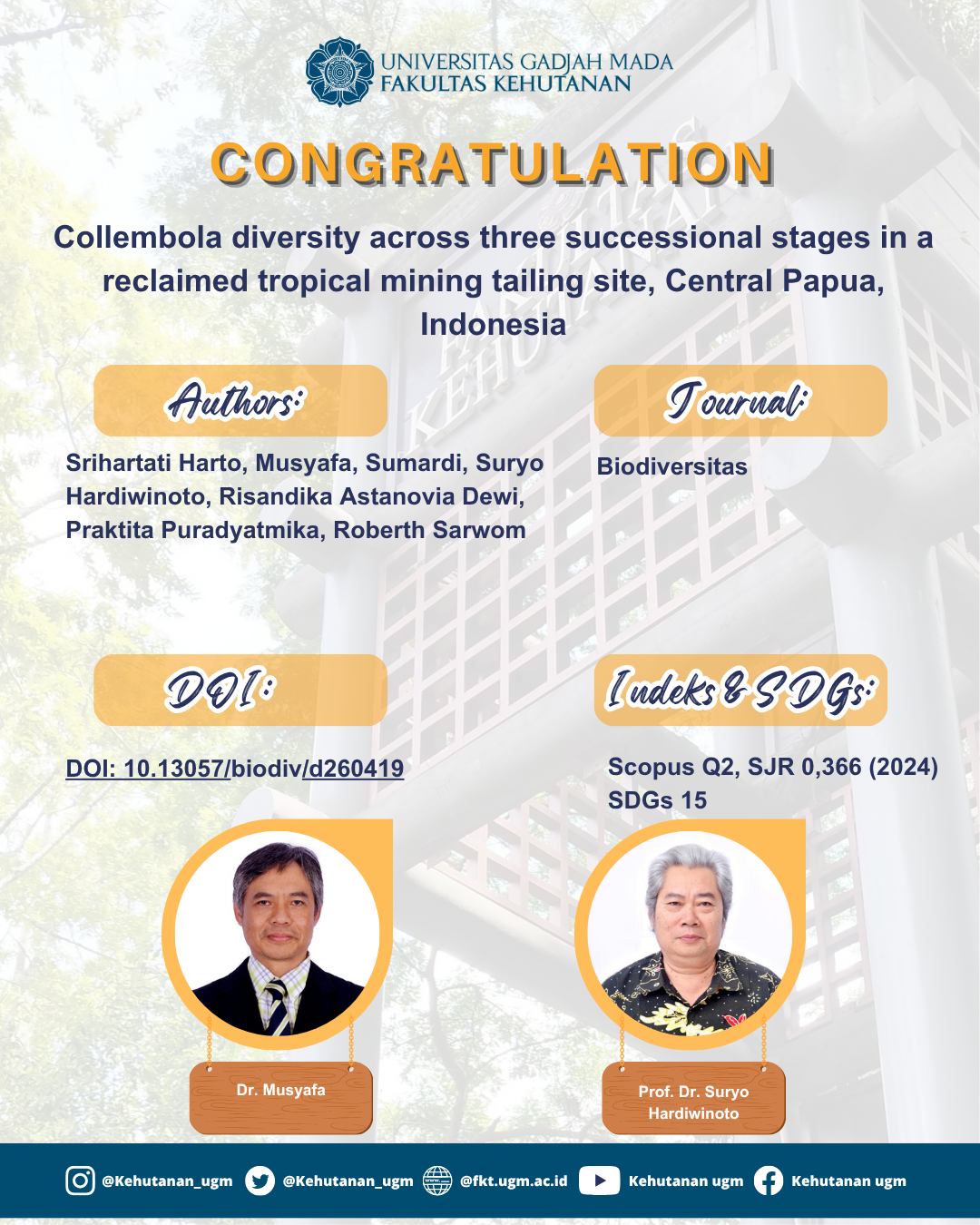
Abstract
Harto S, Musyafa, Sumardi, Hardiwinoto S, Dewi RA, Puradyatmika P, Sarwom R. 2025. Collembola diversity across three successional stages in a reclaimed tropical mining tailing site, Central Papua, Indonesia. Biodiversitas 26:2210-2220.Reclamation of tailing-impacted land by PT Freeport Indonesia aims to mitigate soil degradation and restore the underground microfaunaecosystem. Collembolas are utilized as bioindicators to evaluate reclamation success. This study investigated Collembola diversity across three reclamation stages (10, 14, and 21 years) and natural forest, along with their relationships to soil fertility and heavy metal contamination. Sampling was conducted across three soil types and three litter types, totaling 840 sample plots, using a modified Berlese funnel extraction. According to the Shannon-Wiener Diversity Index, Collembola diversity was classified as high in natural forests and 21-year-oldreclaimed areas and moderate in 14-and 10-year-old areas. Canonical Correspondence Analysis (CCA) showed that organic matter, carbon, and phosphorus were key factors influencing Collembola’s presence. Metal analysis indicated associations between Entomobryidae and Poduridae with lead (Pb) in the oldest reclaimed site, while Neanuridae correlated with mercury (Hg) in the 14-year site. Collembola’s diversity and species richness increased with the reclamation age, highlighting the importance of reclamation duration in supporting ecosystem recovery. These findings emphasize the value of long-term reclamation in enhancing soil microfaunacommunities, improving soil fertility, and guiding sustainable land management in post-mining landscapes.
SDGs:
SDG 15:Life on Land
Link Dokumen:
Download
